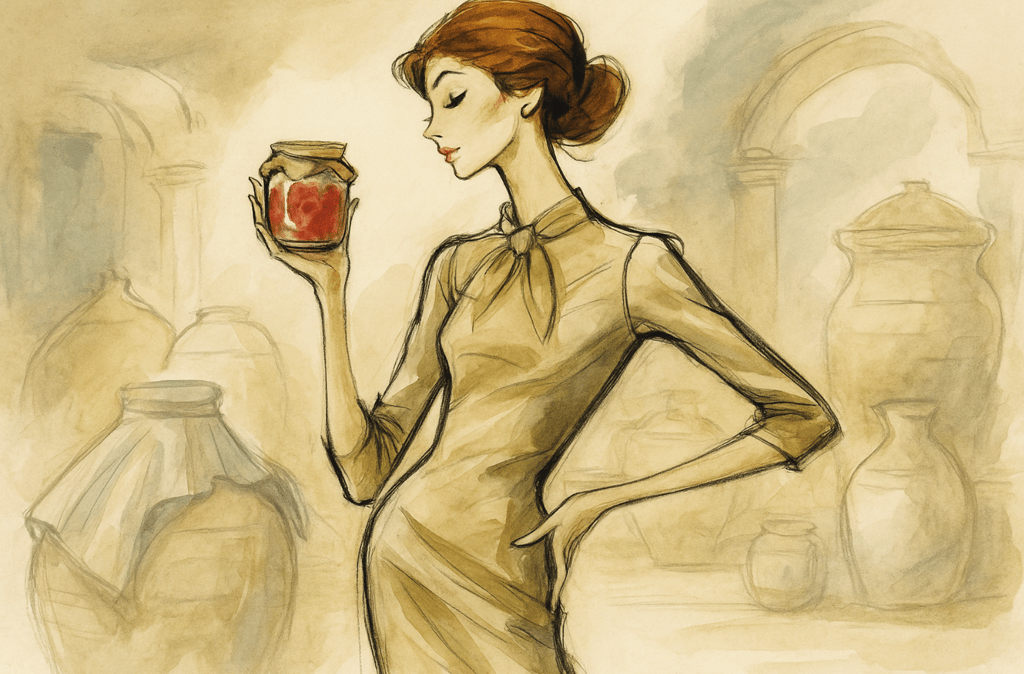The World’s Oldest Recipe for Fruit Jam: How Babylonians Preserved Sweetness 4,000 Years Ago
The world’s oldest jam recipe comes from Babylon, where dates and honey were sealed in clay jars 4,000 years ago. Discover how ancient Mesopotamians preserved sweetness.
FOOD HISTORY & TRADITIONS


When you spread jam on toast, you’re continuing a tradition far older than the familiar jars lining modern supermarket shelves. The oldest known recipe for fruit jam doesn’t come from the orchards of France or England but from the ancient cities of Mesopotamia, where the Babylonians were preserving dates and honey in clay jars nearly 4,000 years ago.
These simple, sticky mixtures weren’t just treats; they were a way to capture the fleeting sweetness of fruit, transform it into something enduring, and celebrate abundance in a world where sugar as we know it didn’t yet exist.
Preserving Sweetness Before Sugar
In the Bronze Age, sugarcane hadn’t yet reached the Middle East, and refined sugar wouldn’t exist for millennia. The Babylonians relied on honey as their primary sweetener—a prized, almost sacred ingredient valued for its taste and its natural ability to keep foods from spoiling.
Dates, one of Mesopotamia’s most abundant crops, became the fruit of choice for these early preserves. Harvested when fully ripe, the fruit was mashed into a paste, then blended with honey to enhance sweetness and prolong storage life. Some variations, recorded on clay tablets, also included chopped nuts or aromatic spices like cinnamon and cardamom, which were traded into the region.
The resulting mixture was packed into sealed clay jars, often with a layer of oil or wax poured on top to create an airtight seal. Stored in cool, dry chambers, these jams could last for months—even through the heat of Mesopotamian summers.
Jam as Luxury and Offering
Unlike the everyday breakfast staple it is today, Babylonian jam was considered a luxury item. It wasn’t slathered on toast (yeast-raised bread wouldn’t become common in the region for centuries) but eaten as a treat on its own, paired with unleavened flatbreads, cheeses, or diluted wines.
Clay tablets and archaeological evidence suggest these preserves were more than food. They were offerings for temples, gifted to deities and priests as symbols of fertility and abundance, and were likely served during feasts or as gifts to the elite. In some records, date-and-honey mixtures were even used as part of trade exchanges, with jars travelling along trade routes to other ancient cities.
Archaeology and the Taste of the Past
Traces of these ancient preserves have been discovered in storage vessels excavated from sites like Ur and Babylon. Incredibly, some remnants were still faintly sticky when uncovered, their sugars partially crystallised but recognisably preserved.
Analysis of these residues confirmed the basic recipe: dates, honey, and occasional additions like nuts or aromatic spices. The discovery shows not just how the Babylonians preserved food but also how they approached flavour, blending sweetness, richness, and fragrance in a way that feels surprisingly modern.
These findings also reveal how deeply early civilisations valued food preservation. In a world without refrigeration or refined sugar, turning a perishable fruit like the date into a long-lasting, portable luxury was both practical and celebratory—a way to bridge the gap between seasons and showcase the wealth of the land.
Fun Fact: A Jam Older Than Bread (Almost)
While bread existed in Mesopotamia, it was mostly unleavened or fermented flatbread. The kind of sliced, yeast-raised bread we associate with jam wouldn’t be common until thousands of years later. In that sense, these early jams were enjoyed more like sweet spreads, energy snacks, or offerings than as breakfast staples.
What Ancient Jam Tells Us About Mesopotamian Life
The Babylonian jam recipe is more than culinary trivia—it’s a window into how early societies thought about food. It shows:
Ingenuity in preservation: Without modern tools, Babylonians created methods—like clay jar sealing and honey’s antibacterial properties—that still echo in today’s canning practices.
The value of sweetness: Fruit preserves weren’t everyday fare but special, highlighting how precious sweetness was before the mass production of sugar.
The role of food in culture: Jam wasn’t just sustenance. It was part of religious offerings, social gifts, and trade networks, underscoring how food carried spiritual and economic weight.
While the ingredients were simple, the symbolism and effort behind them made these jams more than just condiments—they were cultural artefacts, eaten and exchanged as tokens of prosperity and devotion.
The Legacy of Babylonian Jam
Though we no longer store our jams in clay jars buried in dry cellars, the basic principle hasn’t changed much in four millennia. Fruit, sweetener, and a method to preserve it—that formula continues to define jams today, whether it’s a supermarket strawberry jar or a homemade apricot preserve simmered on the stove.
Next time you enjoy a spoonful of jam, consider that you’re part of a story stretching back to the ancient Near East. A story of ingenuity, indulgence, and the human desire to bottle up a taste of nature’s fleeting sweetness.
